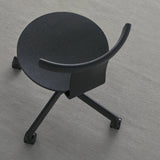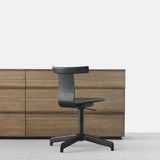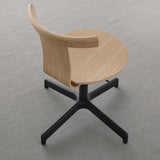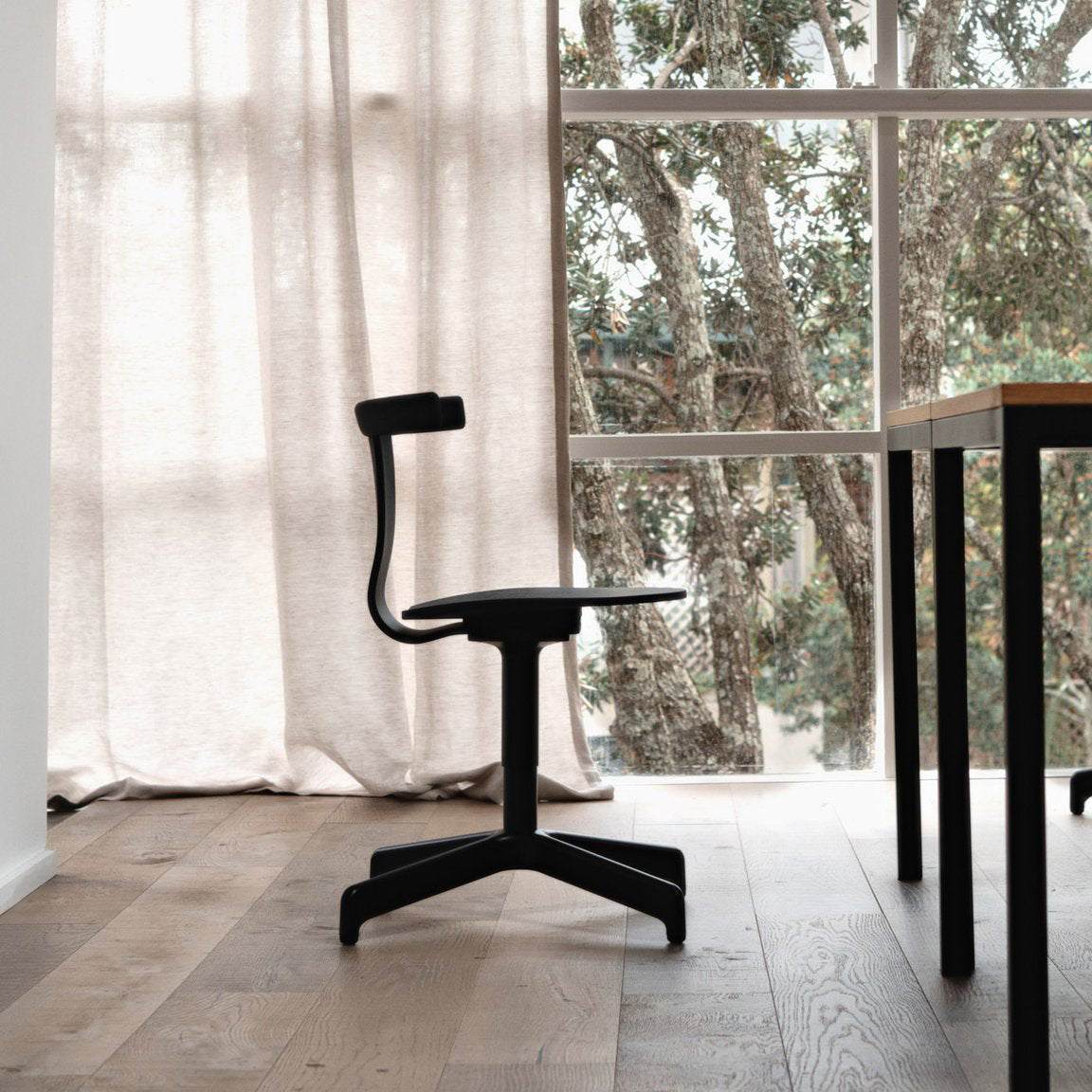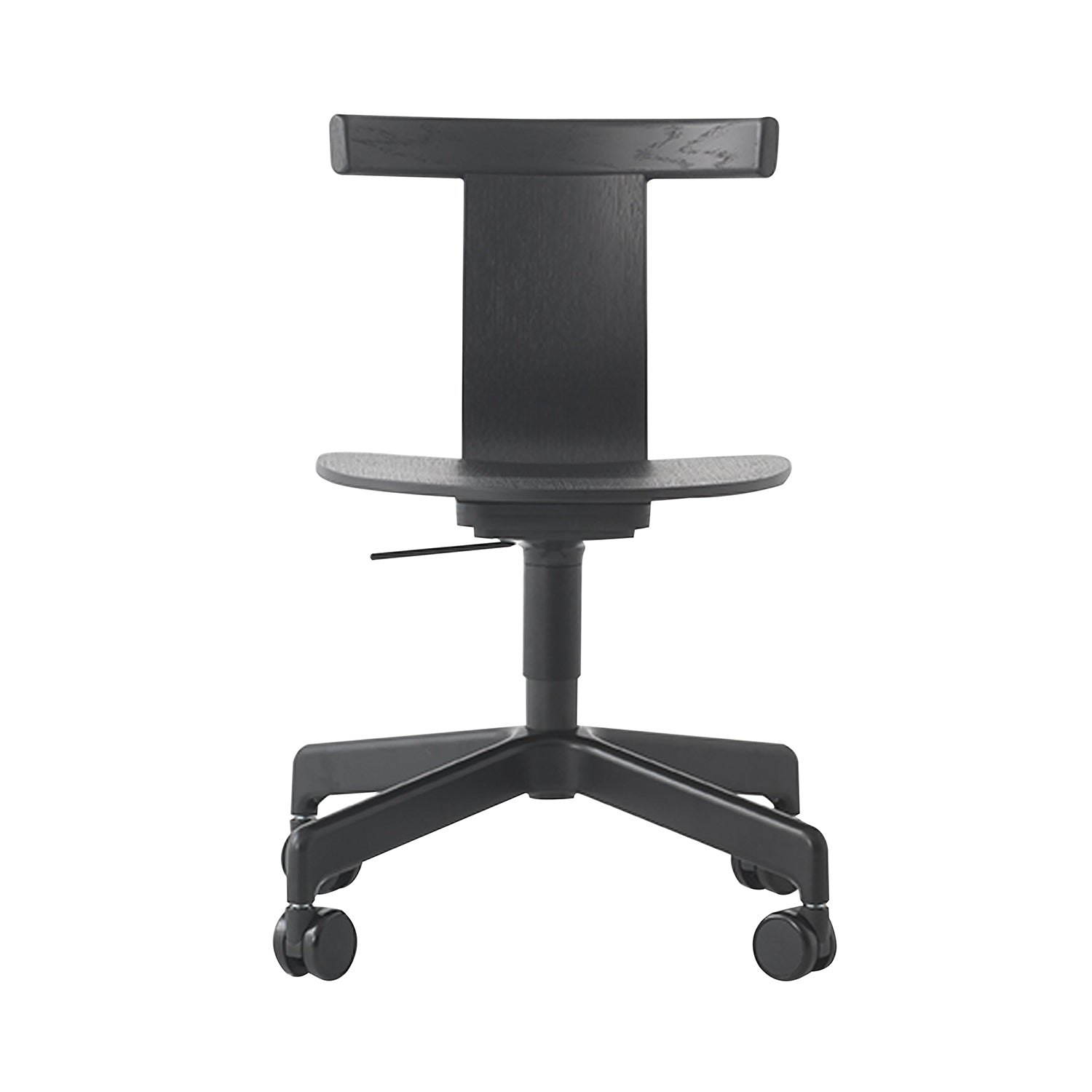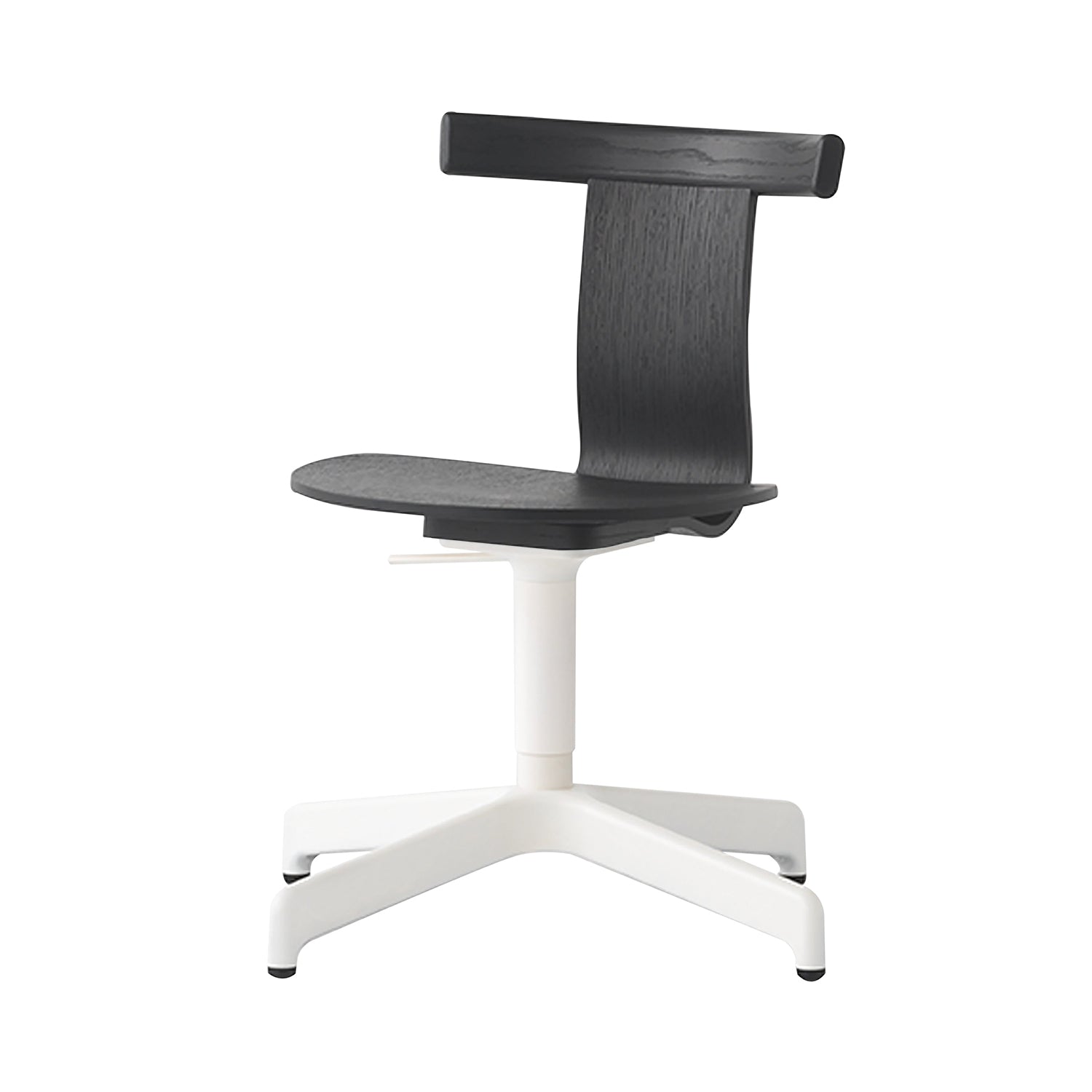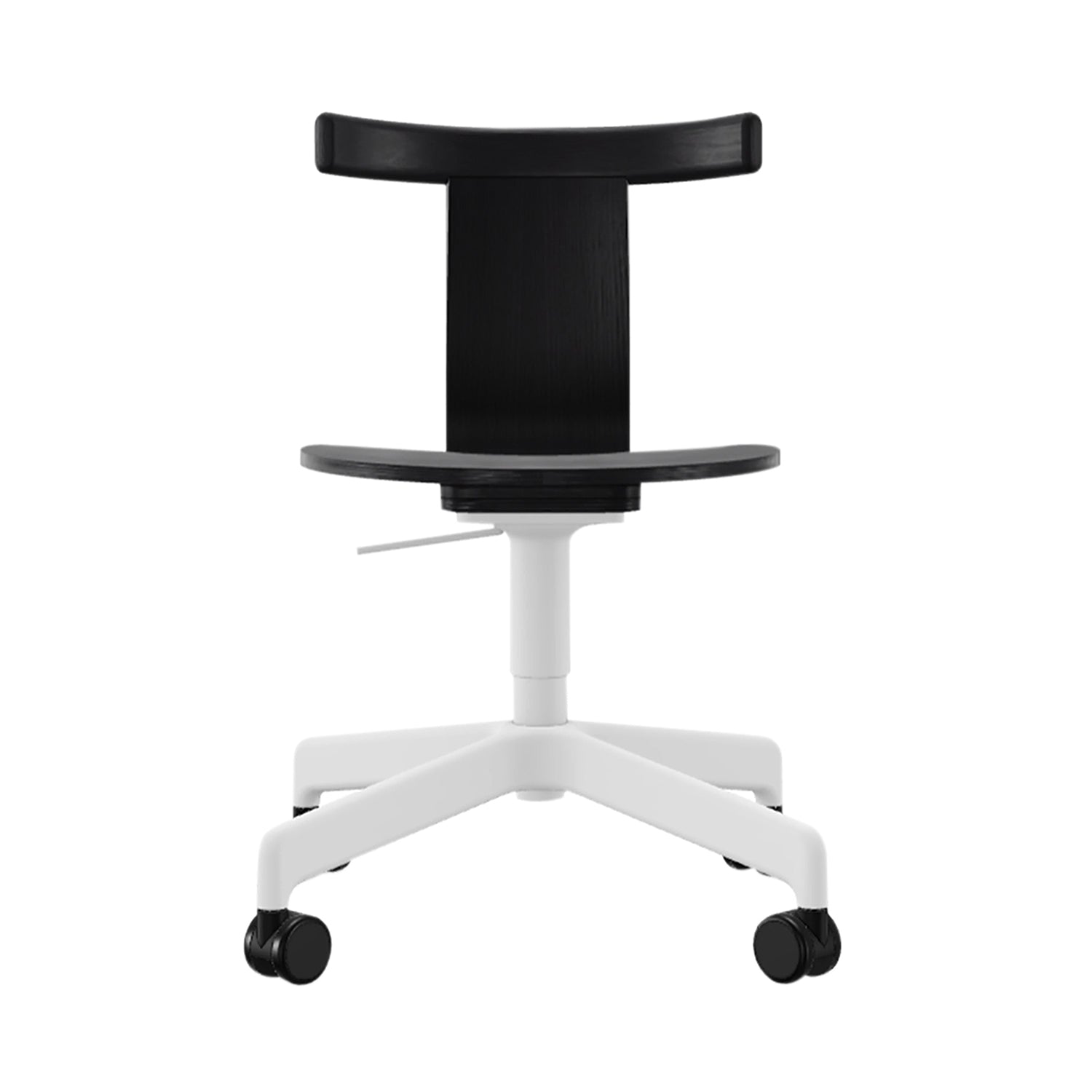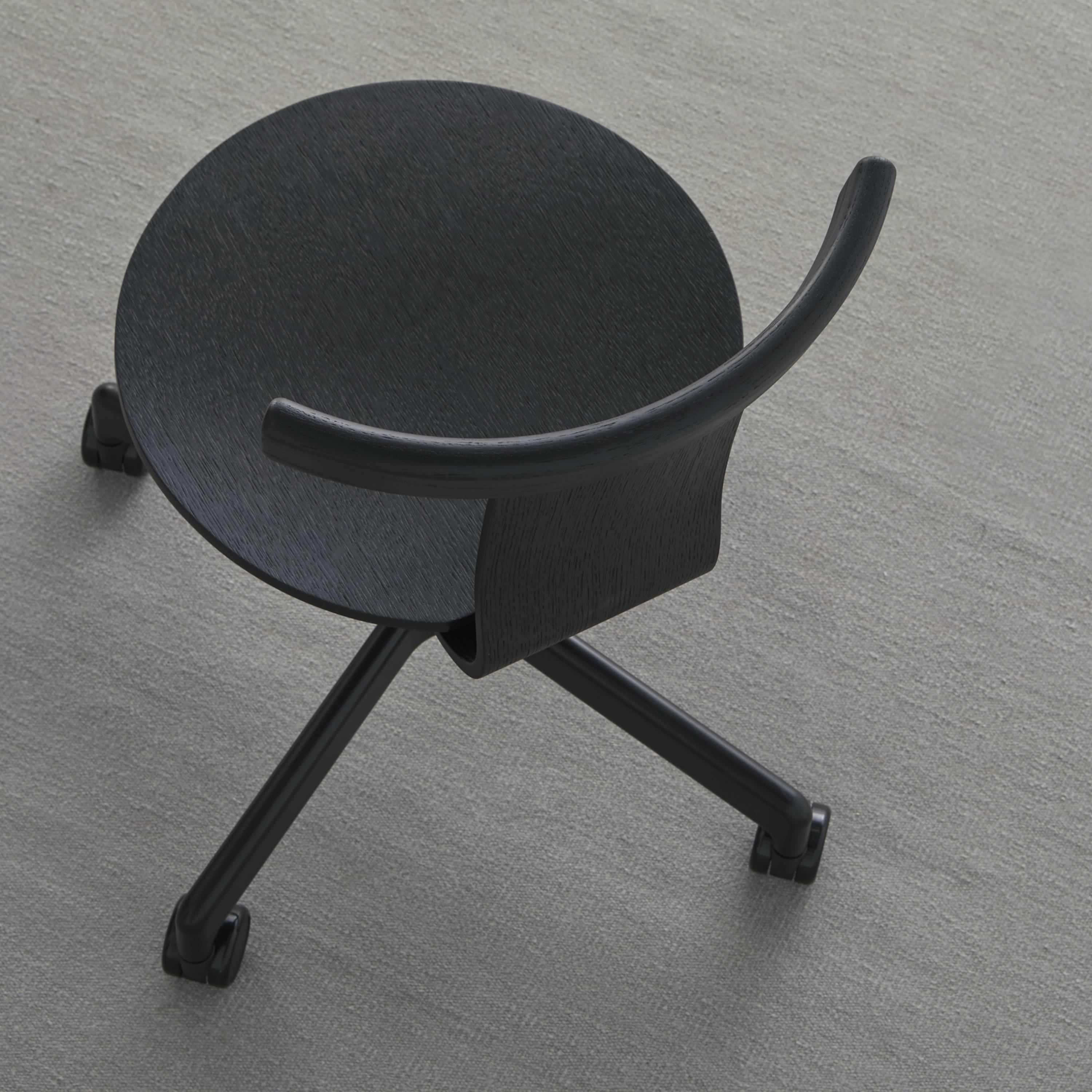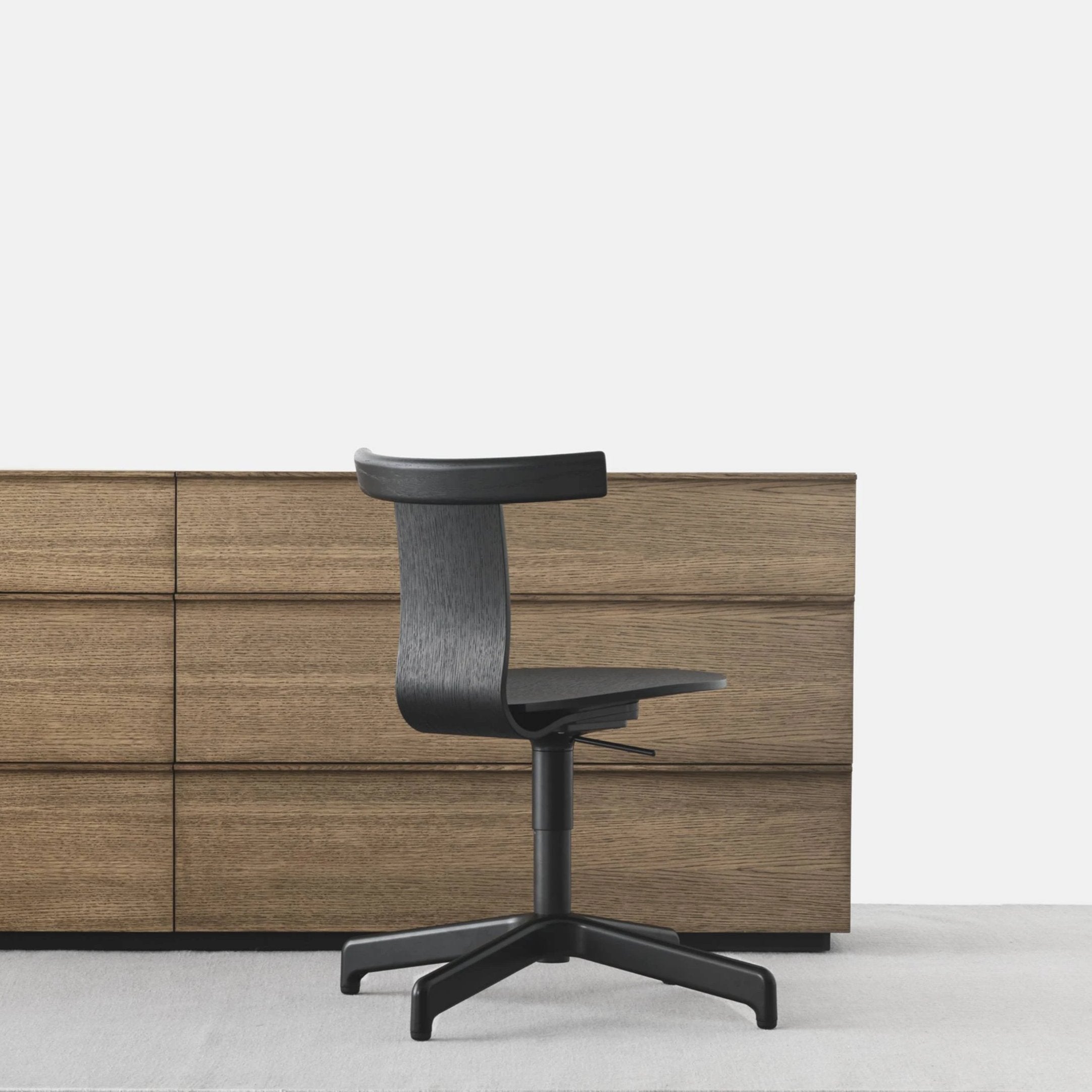
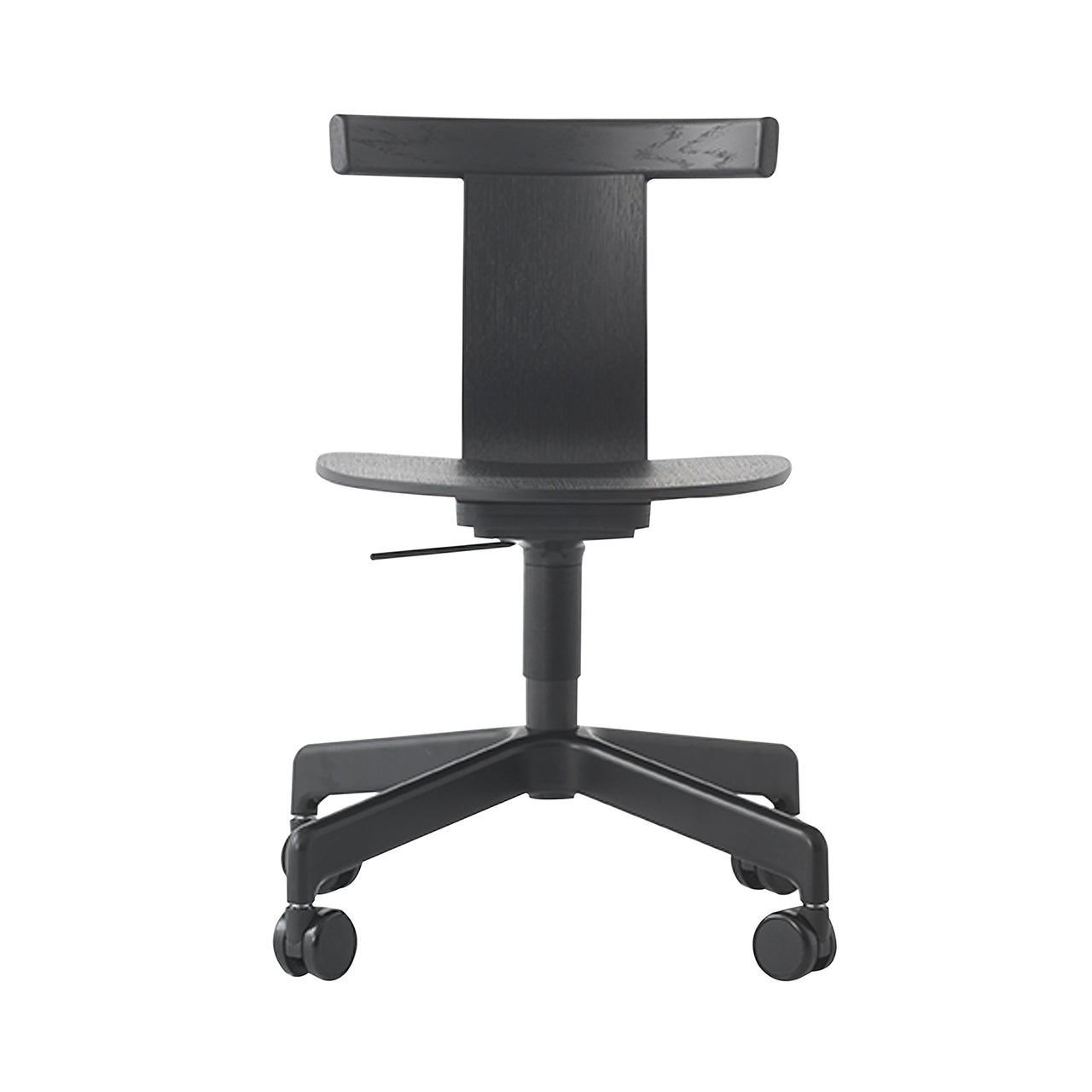
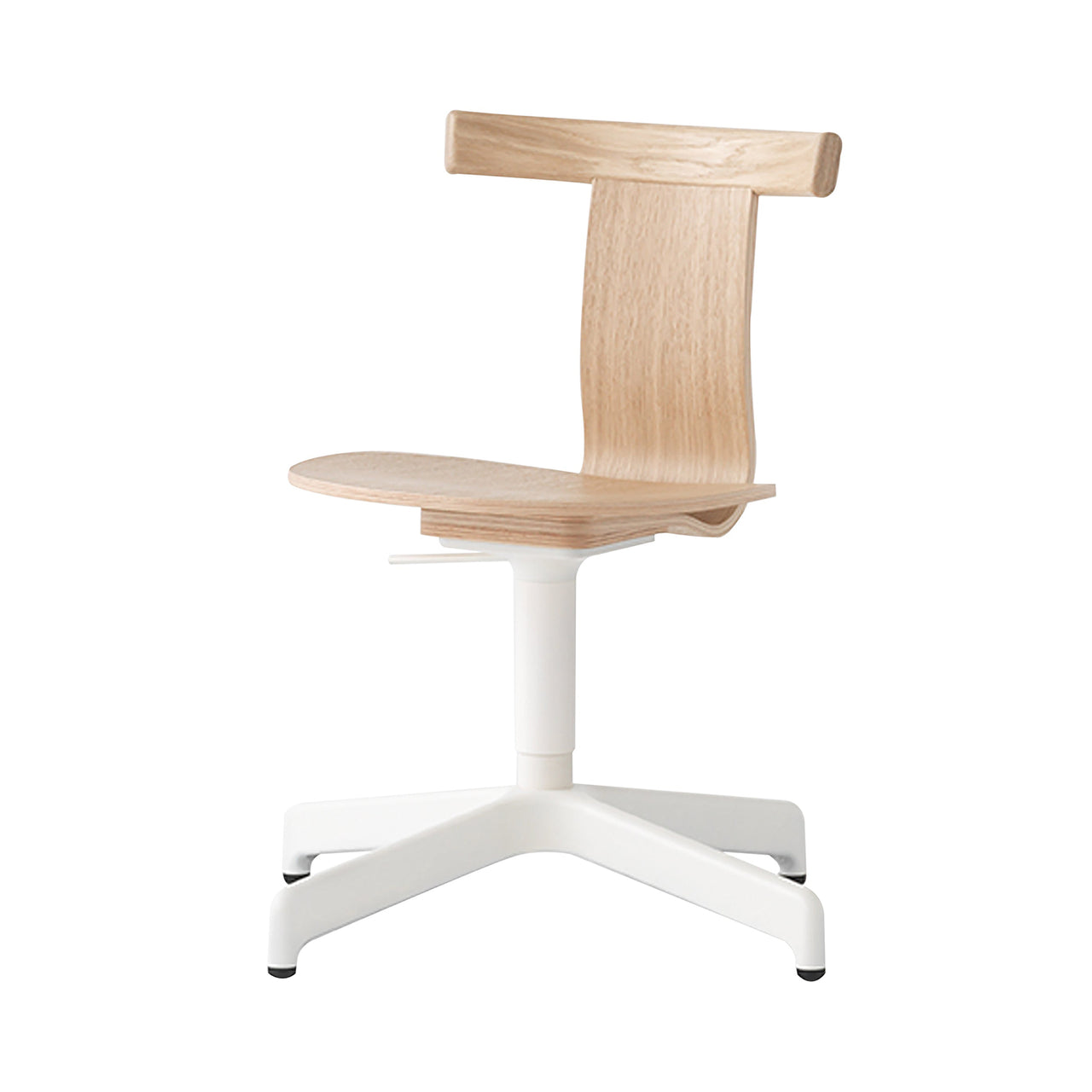
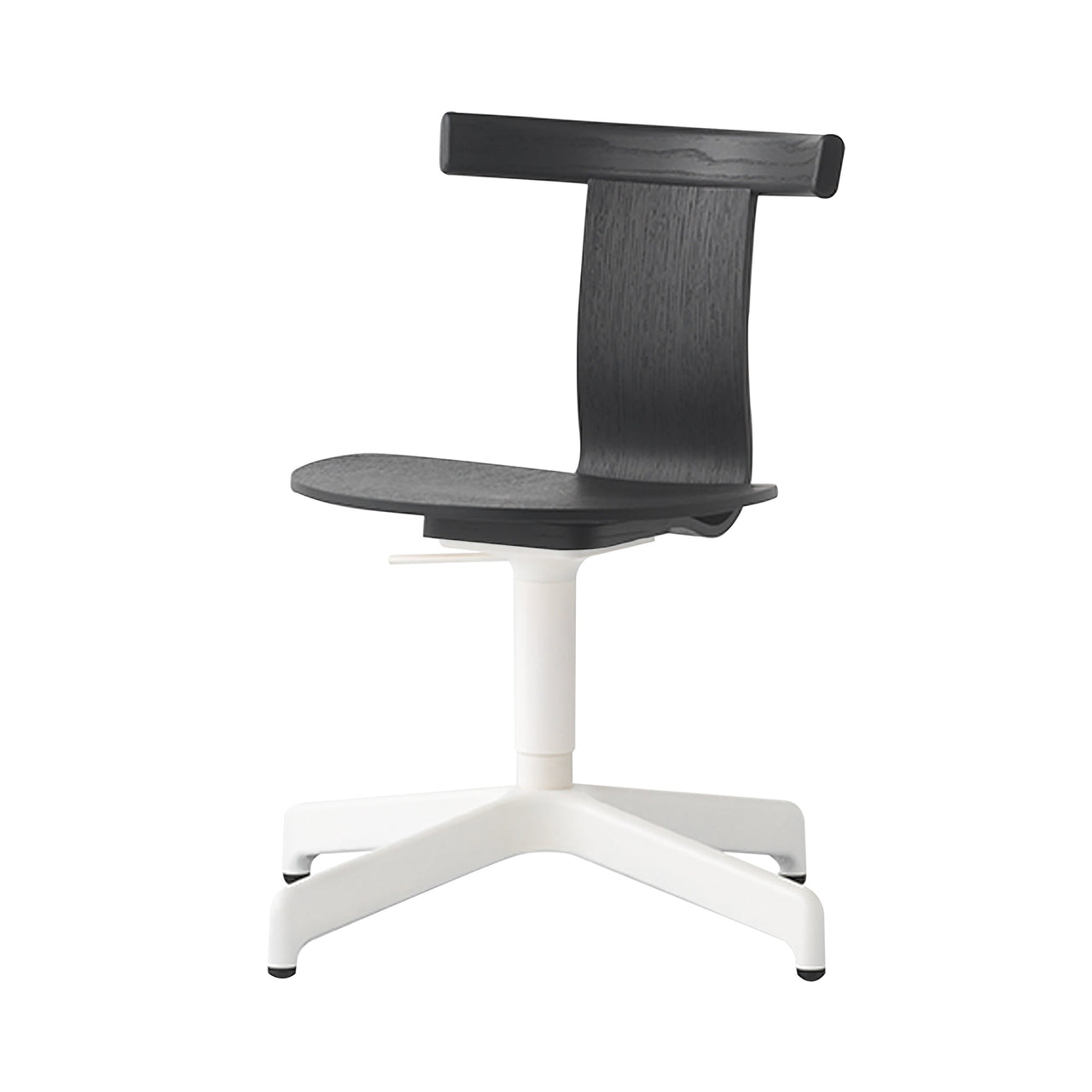
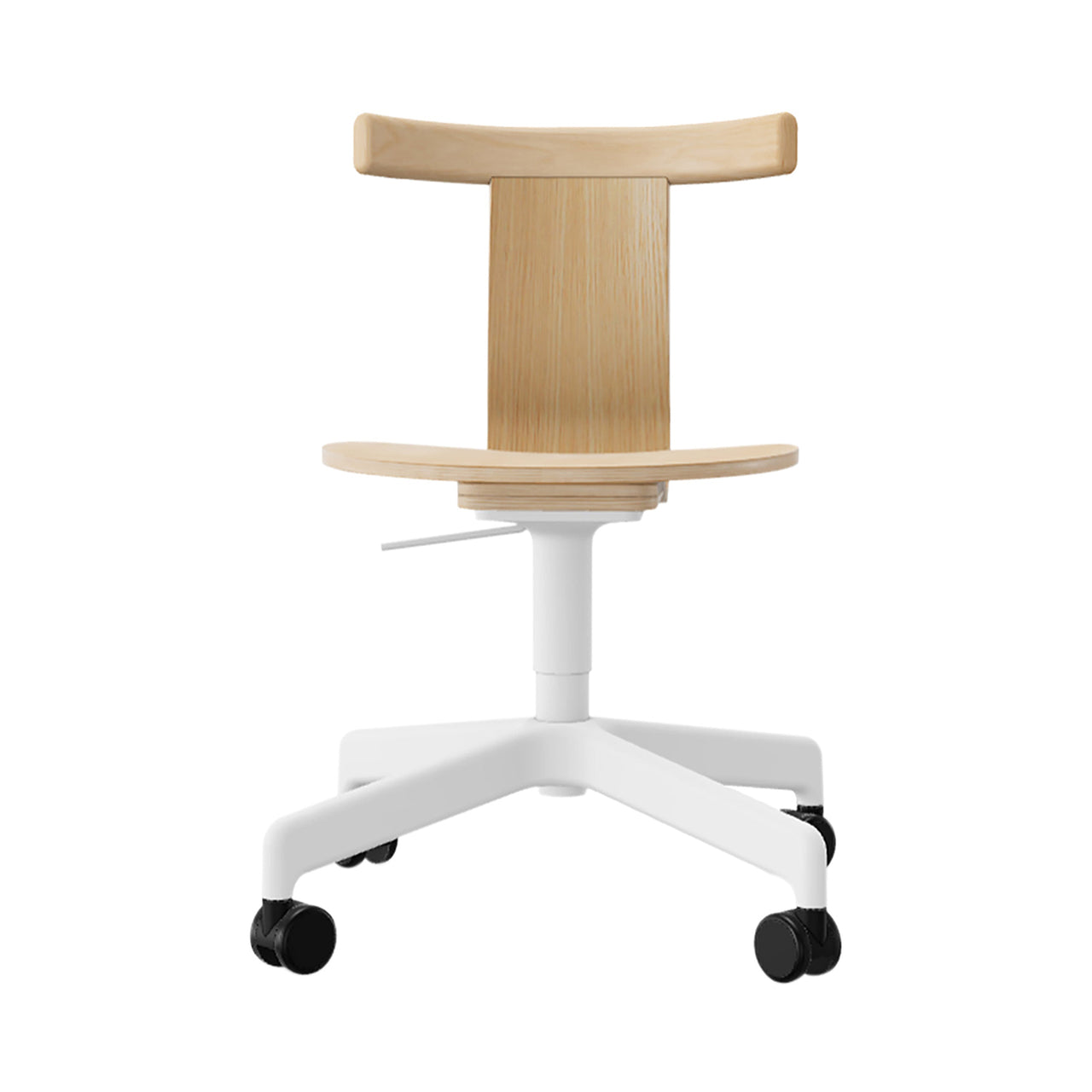

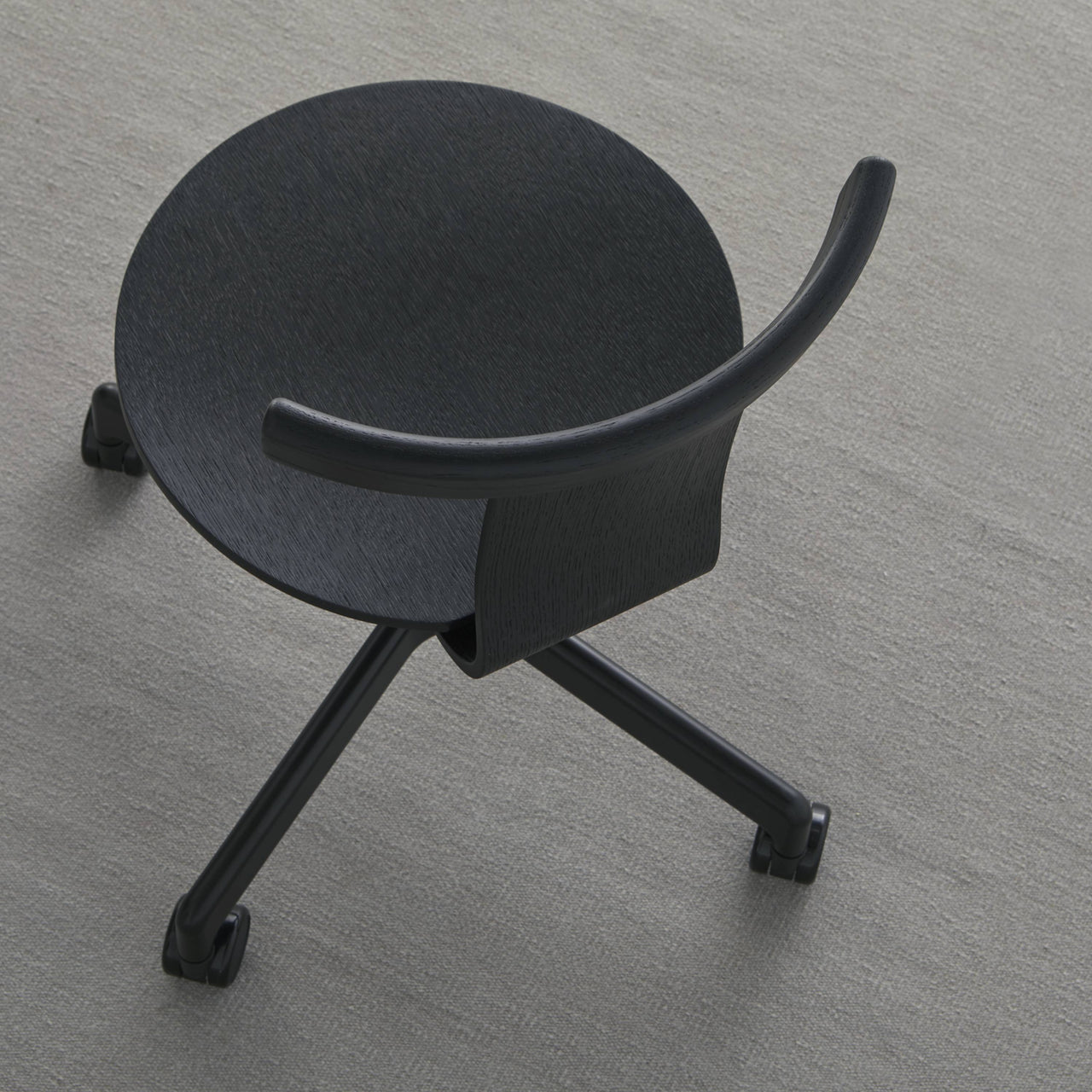
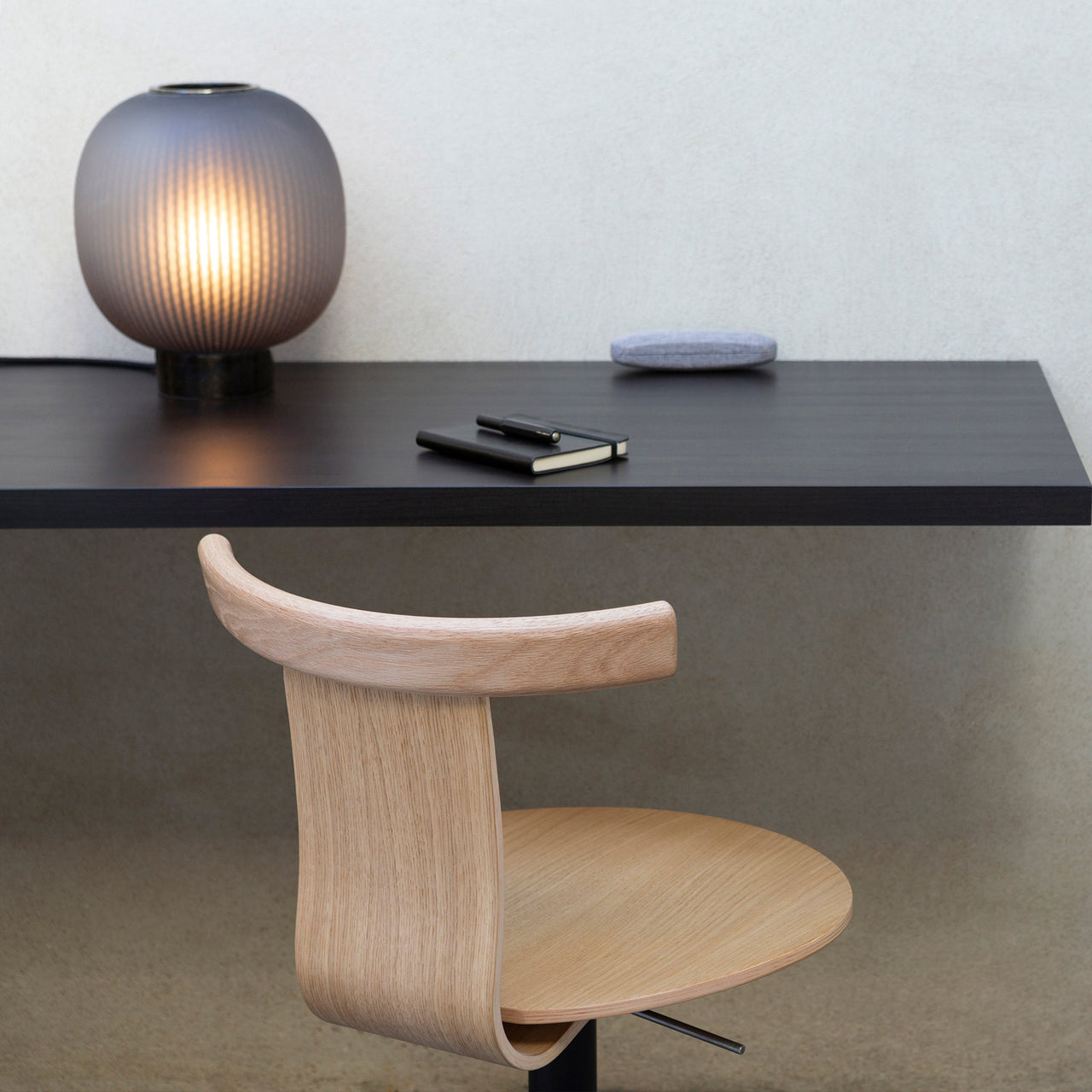



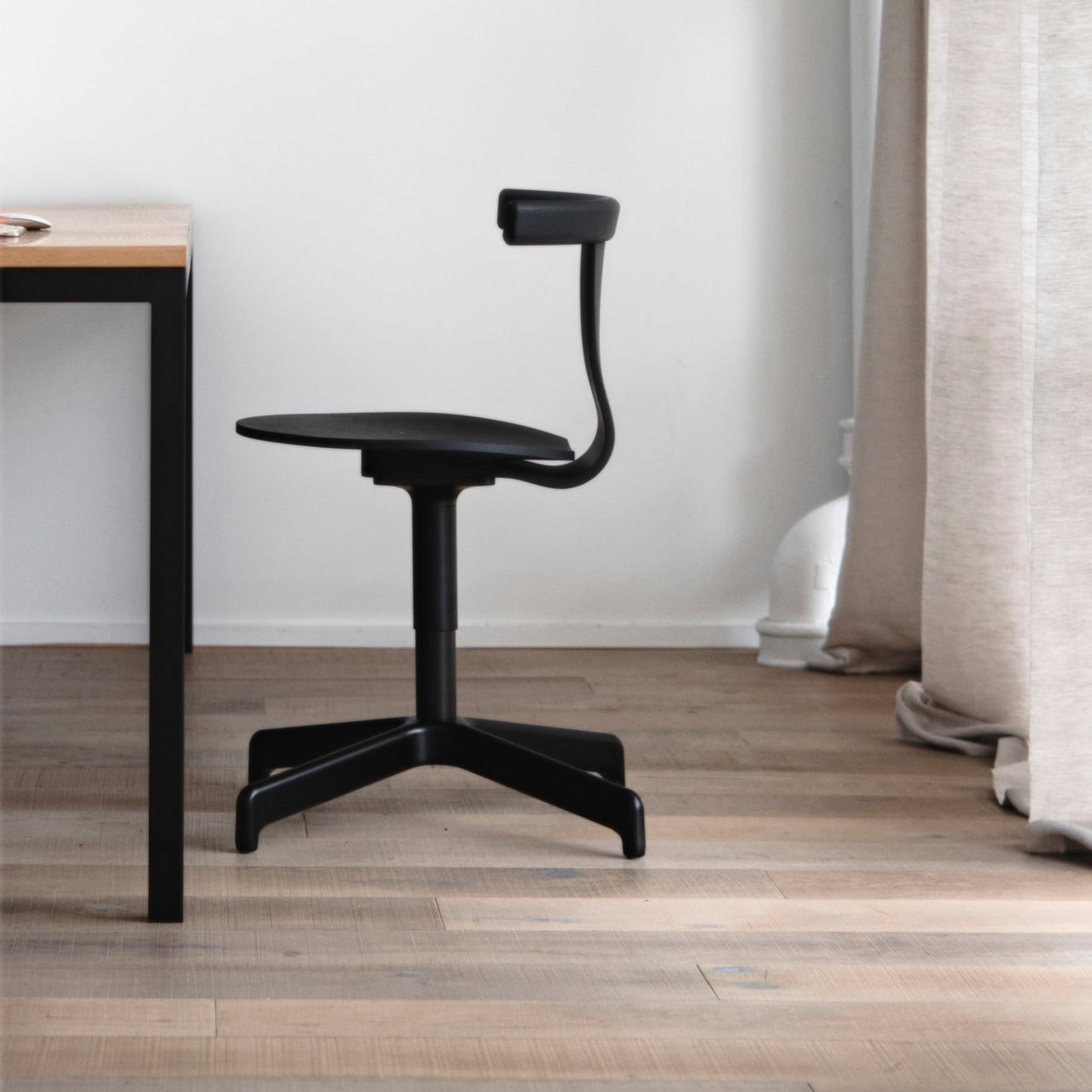


Description
Presciently, in approaching how to reinvent the task chair, London designer John Tree observed: "It is clear that work isn't really occurring in the archetypal office anymore...So the point of this chair is to address this modern need for utility.” With New Zealand brand Resident, Lee’s result is a concentric scheme and low back to accommodate shifts in posture and invite active maneuverability. The 4-star die-cast base—available with or without casters and in black or white—features a concealed up-and-down swivel mechanism to grant the chair a clean and minimal silhouette. Combined with the finely balanced oak veneer and plywood construction of the back rail, Jiro provides responsive ergonomics in a visually striking spare design. “The brief from Resident was to design 'something simple, not overly technical, but subtly ergonomic'," said Tree. "From the beginning we focused on paring back the design, so all that existed were the essential elements."
Specifications
Size
- Without casters: 39" h x 19.1" w x 20.1" d (99.1x48.5x51.1cm)
- With casters: 39" h x 22.2" w x 20.1" d (99.1x56.4.5x51.1cm)
- Seat height: 16.5"-19.5" (41.9-49.5cm)
Material
Oak veneer, cast aluminum
Details
Indoor use only
Brand
Resident
“I’d be ripping my hair out if something took more than half an hour to put together,” says Resident founder Simon James on the subject of flat-pack furniture, something he knows quite a lot about. “Most of our products wouldn’t have more than five or six screws, maximum, nor do they take longer than 5 or 10 minutes to put together.” That’s just one of the innovative qualities of the New Zealand contemporary design and manufacturing company established in 2011. With equal parts dedication to an authentic brand of craft and an eclectic but refined aesthetic, Resident has quickly made a indelible impression.
Set up in a cleverly international way with a small head office in Auckland and a distribution hub in the UK to equal the supply-time equal of its European counterparts, Resident manufactures both in New Zealand and Europe. (Partner Scott Bridgens’ knowledge of logistics comes from previously working as operations manager for Brit design firm Tom Dixon.) A small stable of designers, artists and architects—all New Zealanders and based in various parts of the globe—keeps things tight design-wise. As Simon says: “We’ve gone with people we know and whose work we admire.”






